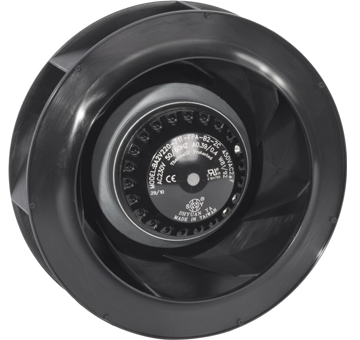How Are DC Centrifugal Fans Used in Industrial Applications?
⚙️ Industrial Applications & Functions
DC centrifugal fans are essential in industrial systems and HVAC systems that demand reliable airflow under pressure, compact integration, and efficient energy use. Their radial airflow design and brushless DC motor technology make them ideal for managing static pressure in equipment with filters, long duct paths, and thermal-sensitive electronics.
These fans are commonly used in dust collection units, fume extraction systems,industrial HVAC systems, and air handling zones where airflow must remain stable despite system resistance. They’re preferred over axial fans in multi-zone ventilation and air purification setups, thanks to their ability to maintain performance even under back pressure.
In electronic cooling, DC centrifugal fans help prevent heat buildup in enclosed systems. They're widely installed in power control cabinets, battery packs, inverters, laser processing units, and automation drives — providing focused, high-pressure airflow to protect heat-sensitive components from thermal failure.
They're also applied in cleanroom ventilation, chemical safety enclosures, and filtered exhaust systems to help maintain workplace air quality. In these cases, centrifugal fans support negative pressure environments and filtration efficiency to meet ISO, OSHA, or EPA standards.
In smart industrial environments, DC centrifugal fans are integrated into SCADA, PLC, and IoT control platforms. With features like PWM speed control, tachometer feedback, and alarm output, they enable real-time airflow control, predictive maintenance, and system-level efficiency optimization.
✅ Key Advantages in Industrial Use
DC centrifugal fans offer strong performance benefits tailored to industrial and HVAC needs:
- High Efficiency: BLDC motors use less power and support speed modulation for energy savings.
- High Static Pressure: Delivers consistent airflow through restrictive ducts, filters, and exchangers.
- Quiet Operation: Lower vibration and optimized blades help reduce noise in sensitive areas.
- Durability: Suitable for 24/7 use, with IP-rated housing, thermal protection, and long-life bearings.
- Smart Ready: Supports remote monitoring and automation with PWM, FG, and RD outputs.
📐 How to Choose the Right DC Centrifugal Fan
Selecting the right fan ensures optimal performance and longevity. Focus on:
| Factor | What to Consider |
| Airflow (CFM) | Match to system ventilation demand |
| Static Pressure | Assess filter, duct, and coil resistance |
| Input Voltage | Common options: 12V, 24V, 48V DC |
| Size/Space | Confirm fan dimensions and mounting fit |
| Noise Level | Choose low-noise models for sensitive areas |
| Control Needs | Look for PWM input and FG/RD signals |
| Environment | Use IP-rated fans for dust, moisture, or corrosive exposure |
If you're unsure, consult the fan’s performance curves — or talk with a technical advisor for application-specific recommendations.
🔧 Maintenance Tips for Long-Term Operation
DC centrifugal fans require little upkeep, but regular checks help maximize reliability:
- Clean Impellers: Remove dust from blades and housings.
- Inspect Filters: Prevent overload by replacing clogged filters early.
- Monitor Feedback Signals: Use RPM or alarm output to detect faults.
- Secure Wiring: Ensure stable voltage and vibration-proof connections.
- Check IP Rating: Use sealed models (e.g., IP55/IP65) for harsh environments.
🔚 Summary & Action
- DC centrifugal fans are a trusted solution for industrial and HVAC airflow needs, offering powerful pressure capability, energy efficiency, and integration flexibility. Whether you're handling electronics cooling, dust collection, or fume exhaust, these fans deliver consistent performance in compact, smart-ready designs.
- ✅ Ready to upgrade your industrial airflow systems?
Explore our full range of DC centrifugal fans engineered for industrial performance — or contact our technical team to get expert support tailored to your application.



.png)


.jpg)